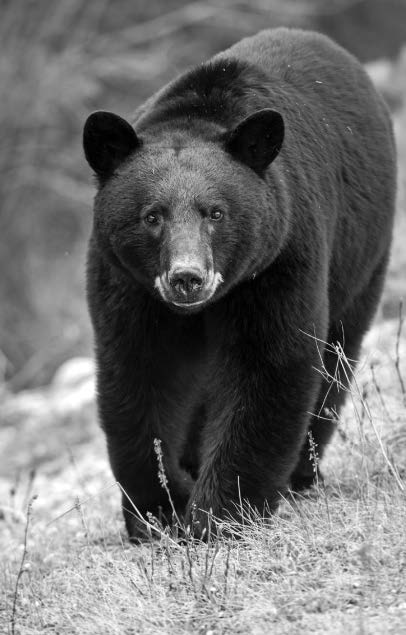Black Bears
Three species of bears live in North America: black, brown or grizzly, and polar. When European colonists arrived, black bears were found nearly everywhere, except in the deserts and arctic north. Experts believe that today's population of about 800,000 is nearly double their original number, despite the fact that they have been forced into smaller forested habitats.
SIGNS OF A VISIT
• Crushed vegetation and fur left in the area.
• Scat and hind foot tracks that resemble those of a human.
• Deep teeth and claw marks with extensive damage. Prey's carcass often skinned out.
• Remains not scattered after feeding; usually taken away and hidden nearby.
TO DETER
• Use electric fencing around beehives, buildings, pastures, and campsites.
• Use bearproof containers for food, scented items, and garbage.
• Clean outdoor cooking areas or fish-cleaning stations.
• Use round doorknobs, not levers, which bears can open.
• Cover compost piles.
Bears are the strongest large animals in North America—they can lift or drag objects much heavier than themselves. They often stand up to get a better look at things. Bears forage from dusk through night to avoid human contact. In late summer and early fall, they feed 20 hours per day in preparation for hibernation. Bear hibernation is actually a winter dormancy; they remain alert enough to be roused. Hunger
makes them most unpredictable before and after hibernation. Most interactions occur when humans move into bear habitat for recreation or housing. Bears will damage structures, crops, beehives, and orchards and occasionally kill livestock. Because reliance on human-provided food is dangerous to their long-term health, bears that become habituated to such sources are usually removed permanently.

Photo: Jillian Cooper/Getty Images